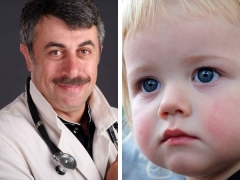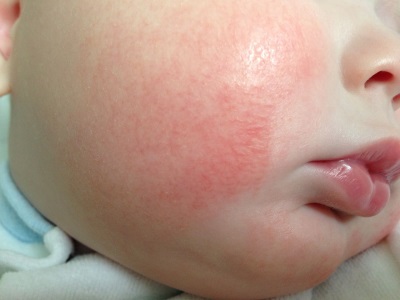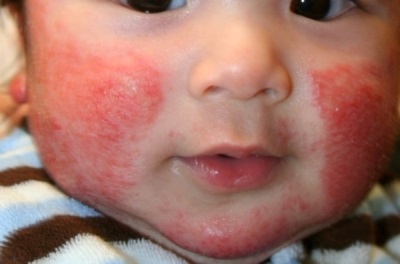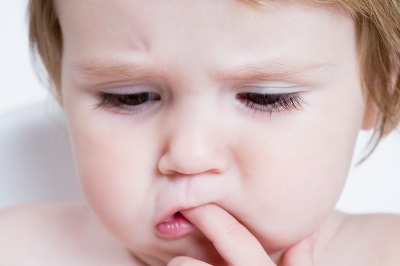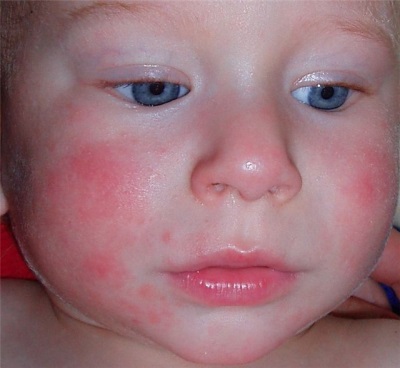Doctor Komarovsky about diathesis
Such a problem as diathesis is known to many parents. What does the famous pediatrician Komarovsky think about her and how does she suggest that she act when detecting diathesis in a child?
What is it?
The word "diathesis" is heard by modern mothers, but Komarovsky notes that most mummies interpret it incorrectly, not understanding the essence of this term. In the books of foreign pediatricians such a diagnosis does not exist. And this is not surprising, since diathesis is the term of domestic medicine.
Why does diathesis appear?
Explaining what is meant by the term "diathesis", Komarovsky proposes to draw attention to the fact that some diseases are noted only in childhood. For example, if an adult eats strawberries, he will not have reddened and scaly cheeks. According to the famous pediatrician, in the body of a growing child there are a number of features. They relate to the digestion of food, and the reactions of the baby to drugs and household chemicals, and the frequency of infections.
Komarovsky emphasizes that two main factors influence the level of health of any child:
- Heredity.
- External environment.
First, the baby is influenced by the genes that were transmitted to him from the father and mother, and secondly, all the factors that influenced him in utero and after childbirth. This is the ecology of the area in which the family lives, and water, and the duration of sleep, and the food consumed, and much more.
All these factors cause a certain constitution of the body. It is she who determines how the child will look, how his internal organs will work, how often he will be sick and what diseases. Diathesis refers to changes in the constitution in which the child is more susceptible to a number of diseases or inadequately responds to stimuli.
As Komarovsky notes, diathesis is not a diagnosis or a disease. This word simply describes the infant's predisposition to certain diseases. And because diathesis will not be able to heal and cure, because it is impossible to affect the propensity. We can only diagnose the child with a specific disease that appeared during diathesis and then treat it.
Kinds
There are about ten different types of susceptibility to disease, but the most common Komarovsky calls such diathesis:
- Exudative-catarrhal. This type of diathesis is also called allergic, because with it the child is prone to allergic reactions and inflammatory diseases.
- Neuro-arthritic. In such a diathesis, a child is noted to have increased nervous excitability, as well as a tendency to pathologies such as diabetes, joint diseases, hypertension, and obesity.
- Lymphatic-hypoplastic. This type of diathesis is characterized by lymph node pathology and poor thymus function. In this case, the child is prone to allergies and infections.
Treatment methods
If a nursing mother ate, for example, an orange, after which she found a rash in a child, Komarovsky suggests calling it not a diathesis, but an allergy. The child has an inflammation that has an allergic nature. And it is caused by diathesis.
The famous pediatrician names two ways in which parents act:
- Mom decides that the child has diathesis, nothing can be done about it, because heredity is to blame for everything and she also had a rash after an orange in her childhood, but passed away with age. And he continues to eat citrus fruits, since all the same nothing is done. This way, according to Komarovsky, unfortunately, is very common for our country.
- Mom does not call such a reaction diathesis and does not blame heredity, but stops eating citrus fruits, while the baby is being treated for a specific disease - allergic dermatitis.
A popular doctor stresses that it is always unpleasant for people to feel guilty, so they are more likely to blame the constitution and heredity than to change the factors that influence the formation of the constitution and heredity.
Komarovsky argues that having knowledge of the right behavior during of pregnancy, the life of the newborn, the characteristics of feeding, sleeping, walking, leisure, hardening and other nuances, as well as the lack of desire to constantly treat something help to avoid diathesis. And in order to cure the baby, you need to establish the correct diagnosis and treat the disease that has developed in the child.
Allergic dermatitis
This disease Komarovsky calls the most frequent manifestation of diathesis. It is manifested by redness on the skin, which looks like specks, spots, dots, often itch and flake, crack and even ulcerate. It is this disease in most cases is meant when they talk about diathesis.
A well-known doctor claims that the main role in assisting child with atopic dermatitis belongs to parents, not doctors. On the skin of a child with atopic dermatitis, you only see manifestations of what is happening inside the child’s body.
The rash is triggered by the production of antibodies to allergenic substances. It is only a consequence of the contact of the child’s body with allergens. And if the doctor can only help reduce the manifestations on the skin, then the parents are able to prevent their occurrence. To do this, you just need to find out how the allergen enters the body of the crumbs - through food, through the respiratory system or through contact.
Preventive measures should be directed all the way:
- Food No need to rush in to introduce complementary foods and acquaint the child with the food that is likely to cause allergies. Parents should carefully choose products for the children's table, and if the manifestations of allergies increased, keep a food diary.
- Respiratory. Parents should be on their guard when using aerosols and any strongly smelling substances. The source of allergens for crumbs can be a pet and dust.
- Contact. Maximum attention should be paid to the quality of the child’s clothes, the detergents used, the quality of bathing water, and the quality of the toys.
In addition, Komarovsky advises:
- Do not overheat the child. With active sweating, dermatitis will be more pronounced, and the lack of fluid will reduce the excretion of allergenic substances in the urine.
- In time to eliminate constipation. They not only enhance the manifestations of dermatitis, but are often the cause of it.
- Often walk and monitor the humidity in the room. These measures will support the work of the lungs, so that they can actively remove allergens.
- Do not give your child medication on their own initiative. Only a doctor should prescribe medication for children with allergic dermatitis.
- Do not dramatize, because such a disease, as a rule, is a temporary phenomenon. With age, the immune system, intestines and liver are improved, and, as they say, the child "outgrow".
